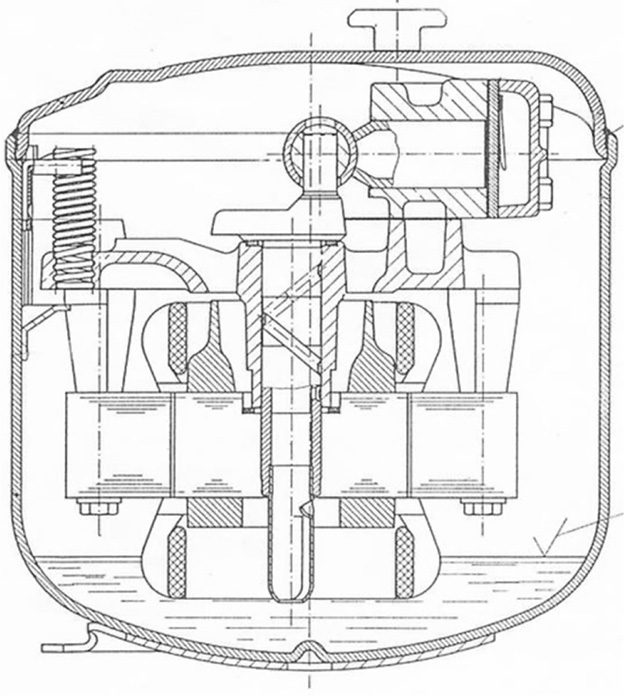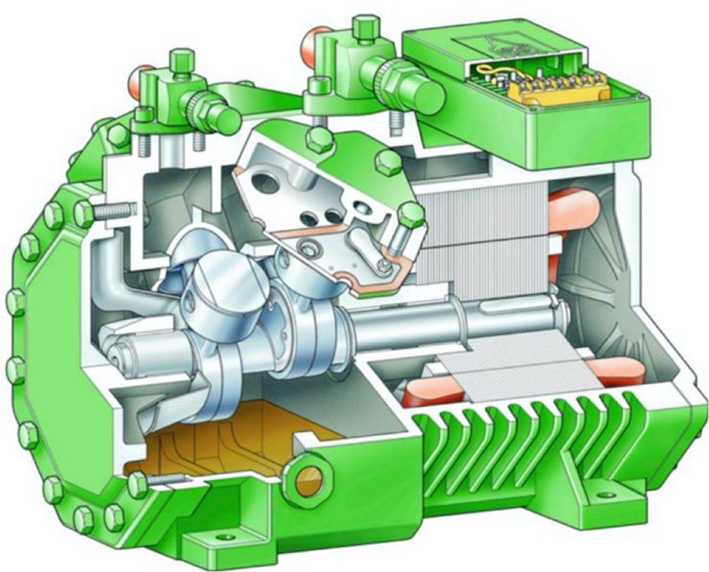Whilst stationary compressors for air are carried out in increasing numbers as screw compressors, air compressors for road vehicles are typically still being developed in the plunger type design. These have particularly small values of the general specific speed parameter.
The increasing need of energy for e.g. air brake systems and height adjustment generate the need for smaller and more efficient designs with higher discharge pressures. As discharge temperatures have to remain below certain limits, the compressors have to work in two stages.
Air brake compressors have to be installed on the side of the combustion engine within limited space, which therefore calls for small designs. Therefore, mostly compressors with two or three cylinders in line are produced. They are fitted with reed valves, which allow high compressor speeds.
The cooling water of the engine also cools the compressor cylinder and the seat plate. With two-stage designs, an intercooler can be integrated within the cylinder head. Because of the direct coupling with the engine an unloading equipment has to be fitted, which reduces the load in idling mode.
Refrigeration compressors take up a large proportion of piston compressors produced, both in numbers and in installed power. For environmental reasons and due to the greenhouse effect of many working fluids within the refrigeration technology (refrigerants) most of the compressors are of hermetic or semi-hermetic design. By fitting both compressor and motor within one housing no shaft has to be led to the outside.
One differentiates between the (fully) hermetic design (with welded housing for example for household refrigerators, see Figure 3.8) and the semi-hermetic design (bolted housing with static seals for larger compressors in the commercial field). Due to the thermodynamic conditions with refrigeration compressors, a multistage compression is in most cases not necessary.



